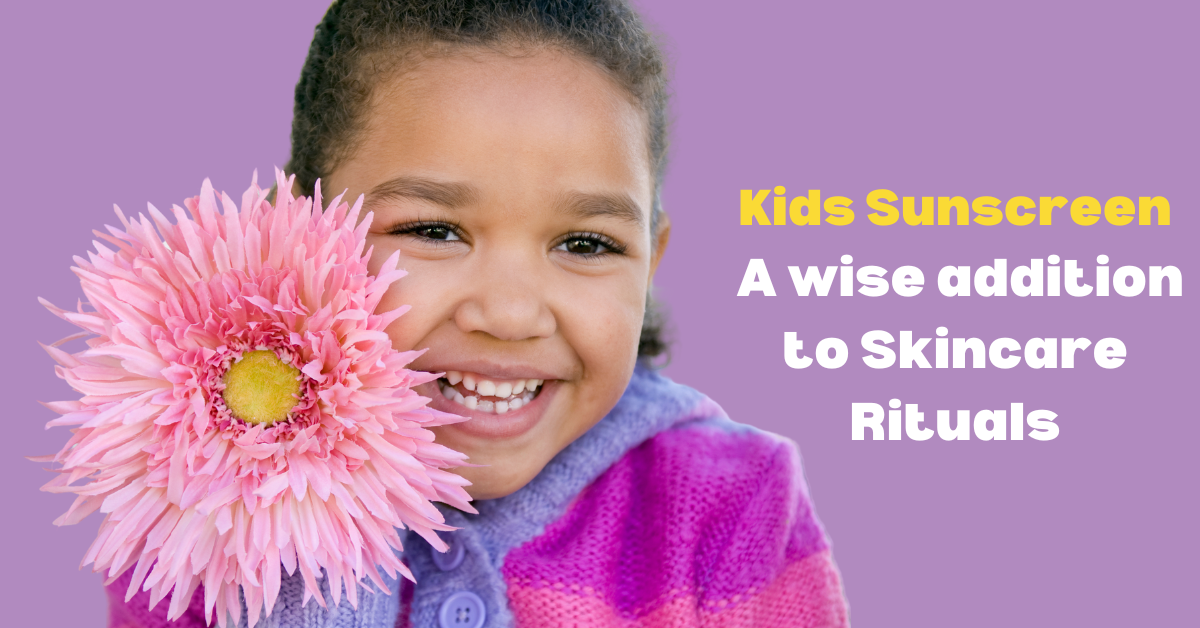
More and more parents are now adding sunscreen to their kids’ skincare routine Safeguarding children from the sun’s harmful rays is more than just a matter of preventing sunburn. Prolonged exposure to UV radiation during childhood can lead to cumulative damage, increasing the risk of skin cancer later in life. By instilling sun-safe habits early on, parents empower their children to embrace a lifetime of healthy sun protection practices.
When choosing sunscreens for kids, it’s important to prioritize their sensitive skin and ensure effective protection against harmful UV rays. Here are some factors to consider:
- Broad Spectrum Protection: Look for sunscreens labeled as “broad spectrum,” which means they protect against both UVA and UVB rays. This provides comprehensive protection against sunburn and skin damage.
- SPF Level: Choose a sunscreen with SPF 30 or higher for adequate protection. SPF 30 blocks about 97% of UVB rays, which is suitable for most kids. Higher SPF values provide slightly more protection but don’t offer significantly more benefits beyond SPF 30.
- Water Resistance: Opt for water-resistant or very water-resistant sunscreens, especially if your kids will be swimming or sweating. Water-resistant formulas adhere better to the skin during activities, but reapplication is still necessary after swimming or excessive sweating.
- Physical vs. Chemical Sunscreens: Physical sunscreens containing zinc oxide or titanium dioxide are generally considered safer for children, as they sit on top of the skin and reflect UV rays. They are less likely to cause irritation or allergic reactions compared to chemical sunscreens, which absorb UV rays.
- Ease of Application: Choose sunscreens that are easy to apply and spread evenly on your child’s skin. Spray sunscreens may be convenient, but they should be applied generously and rubbed in to ensure even coverage.
- Made especially for kids : Consider sunscreens that are recommended by dermatologists or pediatricians, as they are formulated with children’s skin in mind and undergo rigorous testing for
- Check Expiration Dates: Ensure that the sunscreen is not expired, as expired products may not provide adequate protection.
- Check for Skin nourishing organic extracts – Sunscreen can offer skin hydration and nourishing characteristics beyond the sun filter. These could be in the form of organic extracts and oils as Moringa, Carrot seed oil. Raspberry seed oil, Vitamin C or E , jojoba oil, gothukala, wheatgerm oil.
Beyond sunscreen, there are several additional measures parents can take to protect yourself and your kids from the sun’s harmful UV rays:
- Protective Clothing: Dress your children in lightweight, long-sleeved shirts, long pants, and wide-brimmed hats to provide extra coverage from the sun.
- Seek Shade: Encourage your kids to play in shaded areas, especially during peak sun hours (typically between 10 a.m. and 4 p.m.). Use umbrellas, canopies, or seek shade under trees or structures to reduce sun exposure.
- Sunglasses: Choose sunglasses that offer 100% UV protection to shield your eyes and the delicate skin around them from harmful UV rays. Look for sunglasses labeled as blocking both UVA and UVB rays.
- Stay Hydrated: have them drink plenty of water, especially when spending time outdoors in the sun. Staying hydrated helps regulate body temperature and prevents dehydration, particularly on hot, sunny days.
- Educate About Sun Safety: Teach your children about the importance of sun safety, including the need for sunscreen, protective clothing, and seeking shade. Encourage them to develop healthy sun habits from a young age.
In the realm of sun protection for children, kids’ organic mineral sunscreen with SPF 30 stands as a beacon of safety and efficacy. Formulated with organic and natural ingredients and free from harsh chemicals, it provides a gentle yet robust shield against harmful UV rays. By embracing organic mineral sunscreen and incorporating sun-safe practices into daily routines, parents nurture healthy habits that safeguard their children’s skin for years to come. In this journey, the sun becomes not a foe to be feared, but a friend to be enjoyed responsibly, fostering a lifetime of sun-smart choices.
